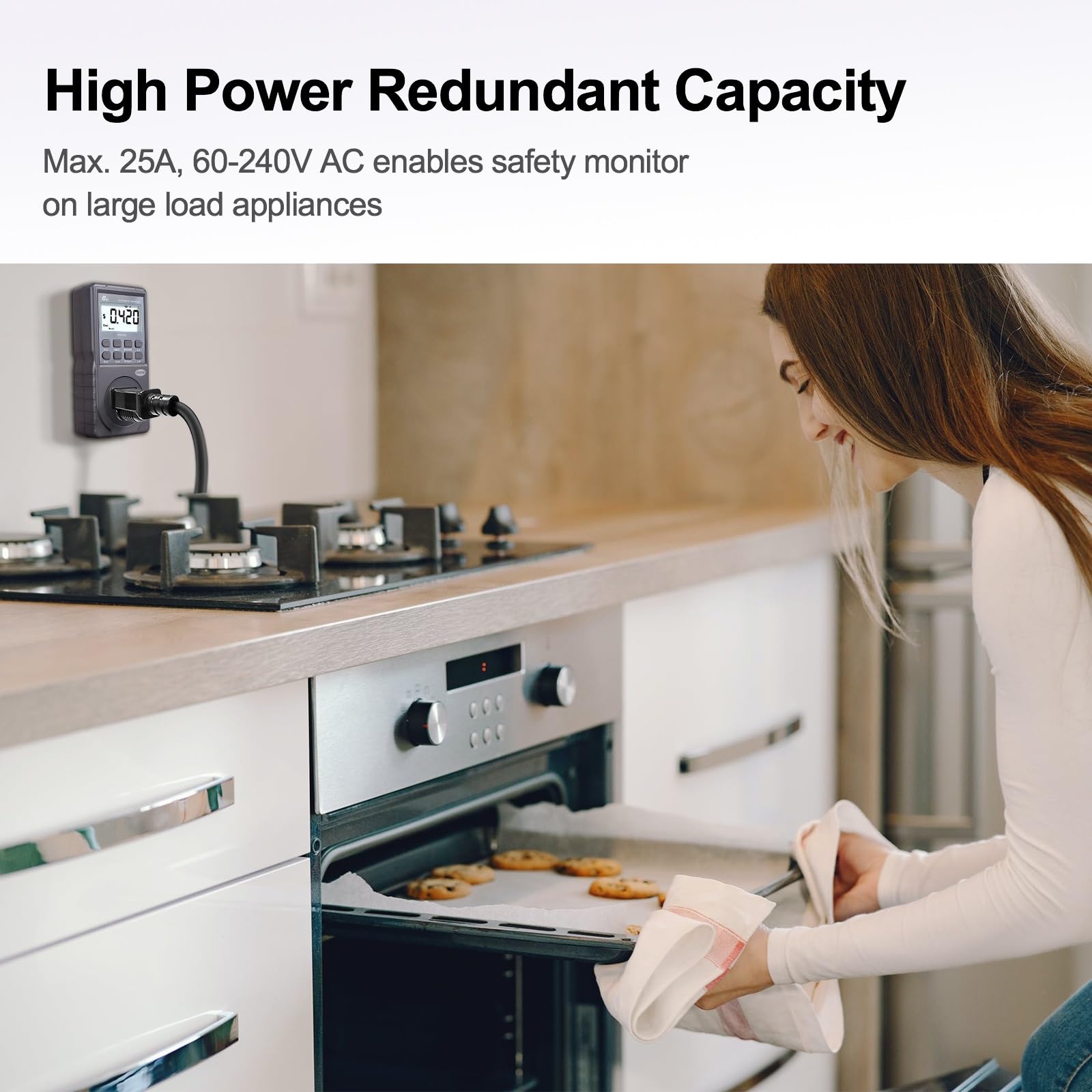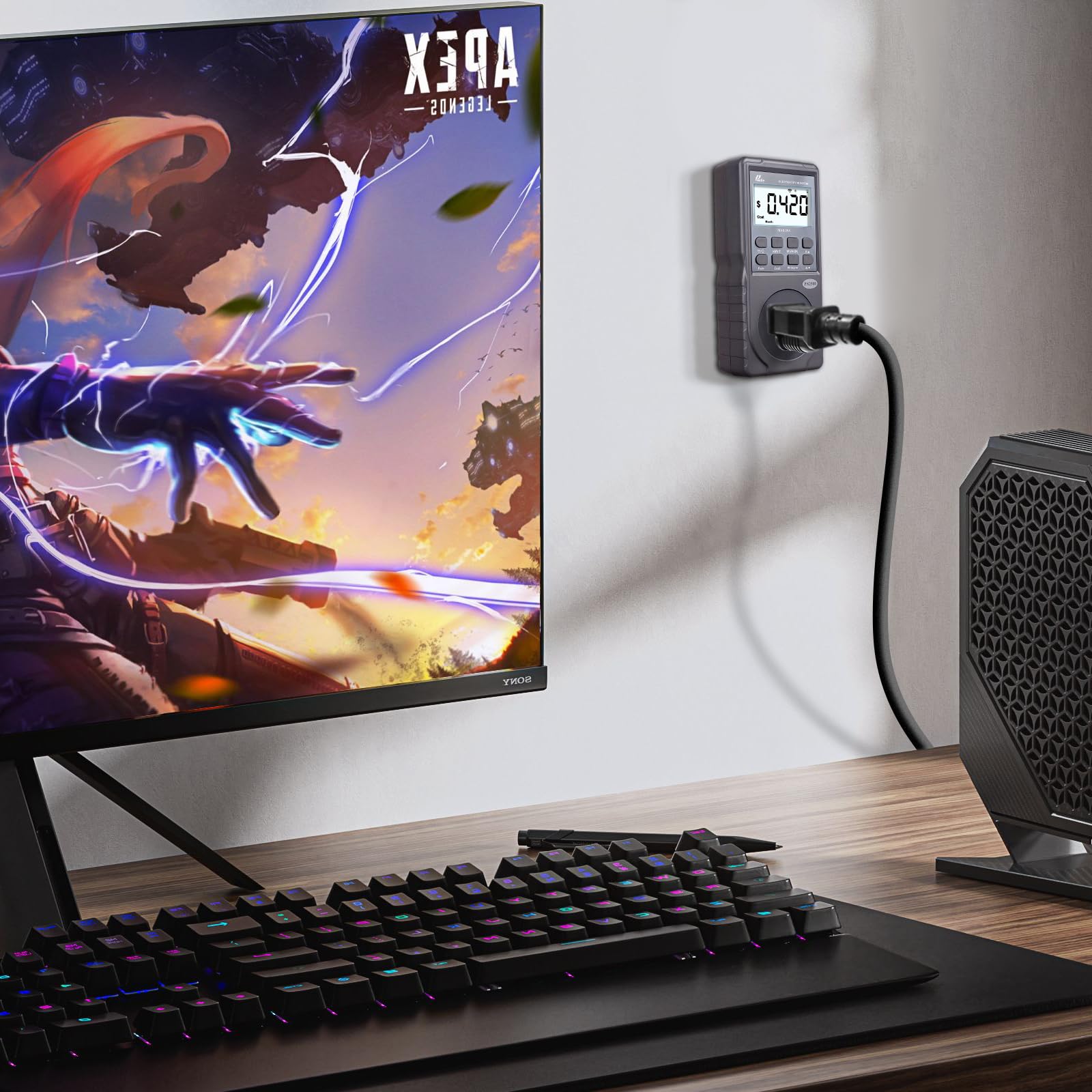Customer Services
Copyright © 2025 Desertcart Holdings Limited
Desert Online General Trading LLC
Dubai, United Arab Emirates








Charge Smart, Live Smart! ⚡
The PN2500 Professional NEMA 5-15 Wi-Fi Wireless Level 1 EV Charger is a cutting-edge device designed for precise monitoring of your electric vehicle charging. With a robust 25Amp capacity and advanced Wi-Fi app control, it provides real-time insights into your energy consumption, ensuring you stay informed and efficient. Its compact design and high accuracy make it an essential tool for eco-conscious consumers.







| Manufacturer | Poniie |
| Brand | Poniie |
| Model | PN2500 |
| Item Weight | 8.1 ounces |
| Package Dimensions | 5.87 x 3.43 x 2.64 inches |
| Country of Origin | China |
| Item model number | PN2500 |
| Manufacturer Part Number | 647697954607 |
J**3
Poniie PN2500 - Great for EV Level 1 Charging Monitoring
I have a Ford F-150 Lightning with extended battery. I work from home so I do not need to charge daily, so I can afford to charge at Level 1 (120v/15A). I know after the EV is charged, the BMS continues to perform other maintenance tasks such as charging the 12V battery, keeping the EV batteries warm/cold as necessary, and other tasks. I have always been curious when this actually happens and how much additional electricity is used for these functions. In my browsing around Amazon, I ran across the PN2500. I was specifically interested in this model because it is rated at 25A, where others are only rated at 15A. My EV is plugged into a 20A AC outlet. The PN2500 is a bit more expensive as compared to others in this category, but it does have WiFi and APP for monitoring and fine tuning settings. So far, the PN2500 has performed flawlessly. I find the APP (IOS version) to be well designed, provides a lot of live data and so far has performed a lot better than I had expected. Most APPs for devices like this are clunky and hard to use and don't function as expected. This APP, however, is working great!. I don't need to into detail of all of the functions this device has, since there are several other reviewers that have covered that, and did a good job in their reviews doing so. There is one point I would like to make note of. If your mobile devices is using 5ghz WiFi at home, you will need to temporarily change your mobile device to 2.4Ghz. When the APP is first installed, it looks for the PN2500 using Bluetooth. Once it finds it, it starts to configure the network settings. It grabs the network config from your mobile for the initial setup. Since the PN2500 only supports 2.4ghz, and your mobile devices is currently configured for a 5ghz network, it will fail initial network setup. Again, change your mobile to use 2.4 temporarily and the initial network setup will be smooth as silk. At lease mine was. Yes, I had to temporarily change my mobile, but after network config was complete, I switched it back to 5ghz and the PN2500 continues to use 2.4ghz. I''m considering getting a 2nd PN2500. I would recommend that everyone has one of these in their tool box.
G**G
Works well for monitoring household appliances, especially remotely
Fairly well built device for monitoring my household appliances. Was using it to determine the typical and max draw of certain appliances (KW, volts, amps) as well as power factor of the devices so could determine what all I could use my EV vehicle 120V 1500W outlet as a power source for if the house power ever goes out. Like that it can give not only the current power, voltage, amps, total KWH, apparent power (VA) and power factor, but the max power , max current, max voltage as well that occurred since it was plugged in. This helps to determine what appliances are usable on with my car 120V outlet, what kind of transients could occur during startup or operation, and what all devices I could have simultaneously or combinations thereof being powered by that car outlet.Like that it is 25A max rating which means any 15A appliance is well under its rating. As another poster mentioned devices only rated for 15A probably are more likely to have issues if a continuous current close to that occurs.Also like the app as can easily remote monitor it if it is a place that is difficult to see or inconvenient to get to , plus it has some graph history capability for the power reading.Didn't have a problem setting up the app, and as far as I can tell there is no fee to use the app.
A**8
Using this to capture Solar/PV system performance
Summary: I have a small Solar/PV system (3000W panels), MPPT and 3500W inverter, so using this energy meter to capture energy usage. Over the past three years, I've evaluated many energy meters, which are the plug-in style without any remote monitoring capability. This Wi-Fi version by PONIIE is one the few offerings that does, and the great feature is the higher amperage rating (more discussion below).Observations: Most house AC lines are 15A or 1875W; and this unit is rated for 25A, which is 3125W. Why this is important is that most low cost energy meters are built to just be able to carry 1875W, which could result in unit heating, which degrades electronic life. In the worse case scenario, the unit malfunctions and/or fails by burning out, and possibly catching fire. As this unit is rated for 25A, the likelihood of that happening is reduce by a fairly wide safety factor (a 15A circuit running over a unit which can carry 25A, is running at 60% of maximum load (15/25).Recommendations: When it comes to electrical load testing, a higher capacity unit will give an additional safety margin.Pros: Good fit & finish; easy to read (and take pictures of) the backlit screen if needed; Wi-Fi connectivity, including circuit control (on/off), and even turning on/off the backlight (also can be done from the face of the unit).Cons: Cost, this is easily 3-4x the cost of an energy meter without the remote monitoring, nor the higher circuit capacity; PONIIE only has five items listed (this is a concern on whether the app will be kept up to date).Conclusion: At $60, rating this 3-stars (cost, new manufacturer, uncertain software longevity).
M**E
Works, but not for my purpose.
I purchased this to log power usage and based on the app's picture and device's WiFi ability, I expected to do some data logging with it; however, while it will connect to Home Assistant, using the Tuya integration, the power meter only sends volage and then separately, current, each about every 4 seconds. Watts are not sent, neither is KWh. Of course you can calculate watts from the received data, but the measurements (I and E) are separated by roughly 3 to 200 milliseconds (I'm assuming they come in separate packets). The power meter would do excellent in providing immediate gross power readings or for a measured time span (for example, 24 hours). In summary, it appears well built, good display, legible multi-function buttons, app is usable, integrates somewhat with HA. Downside is the limited data logged in the app and transmitted via WiFi.
Trustpilot
2 weeks ago
2 weeks ago
2 months ago
2 days ago